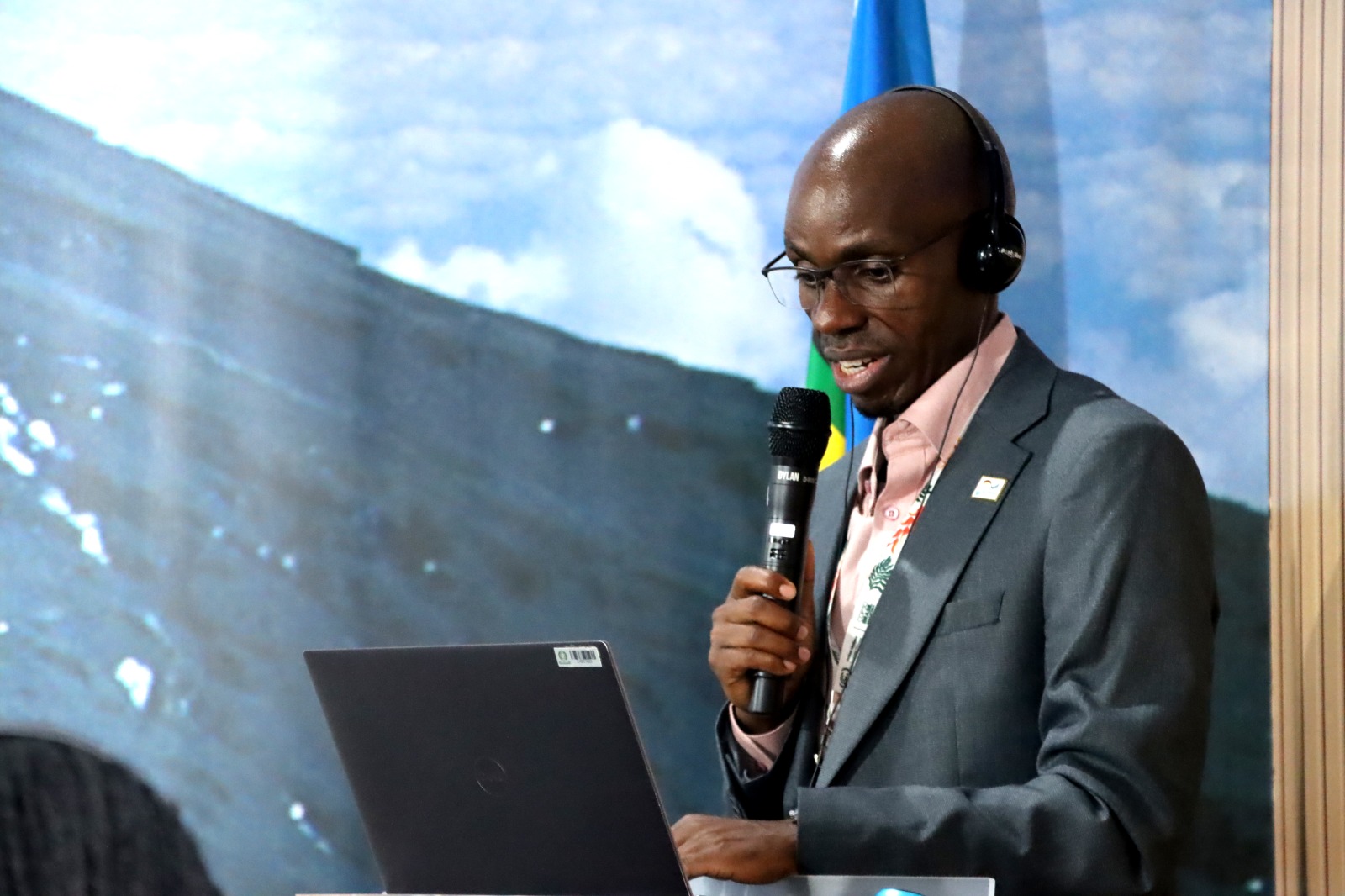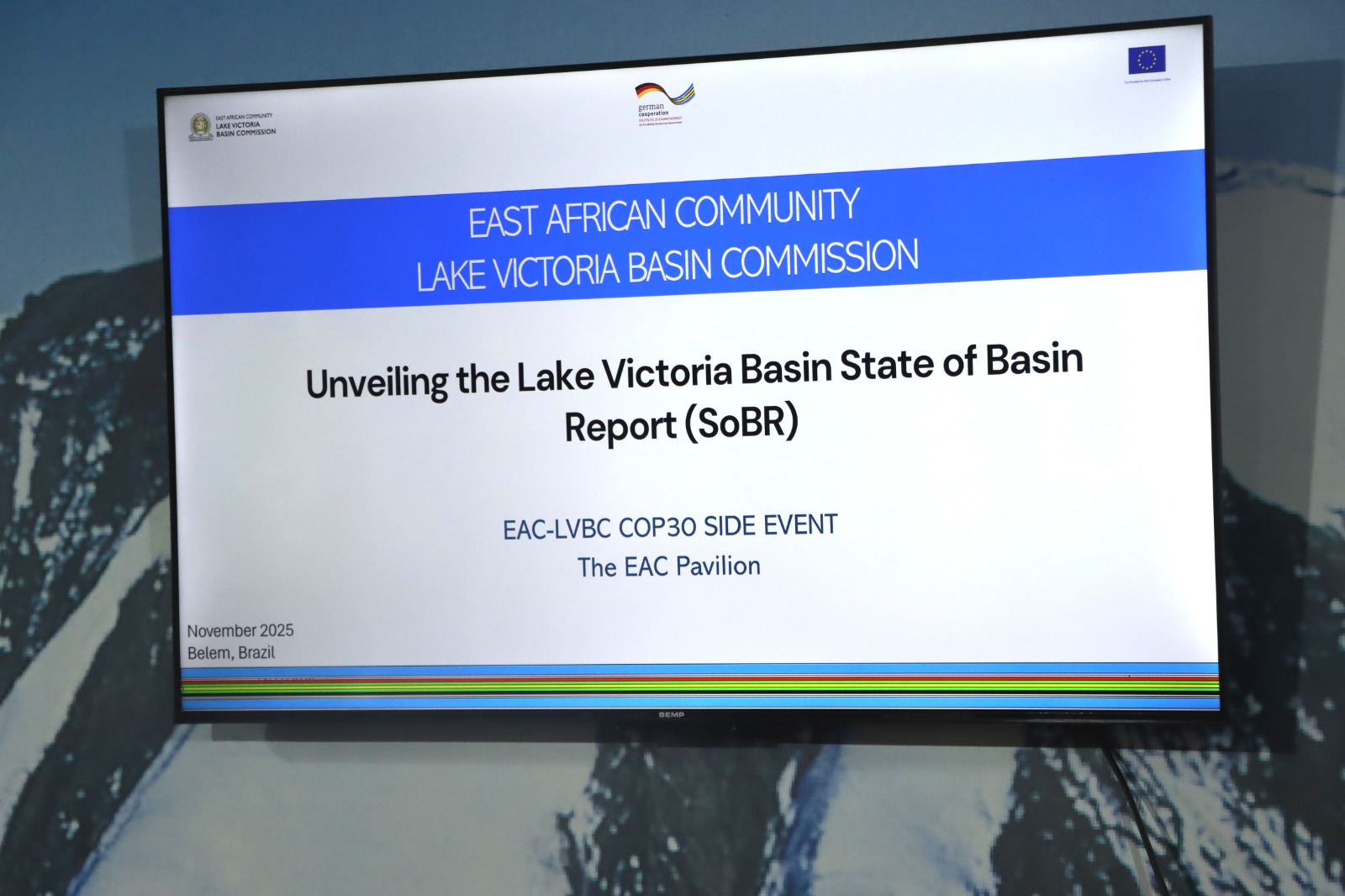 Lake Victoria Basin Commission’s Water Resources Modeler, Eng. Benjamin Ssekamaluli/FAITH MATETE
Lake Victoria Basin Commission’s Water Resources Modeler, Eng. Benjamin Ssekamaluli/FAITH MATETE Lake Victoria Basin State of Basin Report/FAITH MATETE
Lake Victoria Basin State of Basin Report/FAITH MATETEThe new Preview Edition of the Lake Victoria State of the Basin Report 2025 gives detailed insights into the ecological health, socio-economic trends, and governance issues of the Lake Victoria Basin, which supports more than 45 million people across the East African Community.
The report, released last week during a side event at the United Nations Conference of the Parties in Belém, Brazil, highlights major challenges facing the basin, especially rising pollution.
It shows that industrial waste, agricultural chemicals, and untreated sewage from nearby towns continue to contaminate the lake.
The spread of invasive species such as water hyacinth is also a big concern, as it disrupts fishing, blocks transport, and prevents sunlight from reaching the water.
The report also points to increasing effects of climate change, including higher temperatures, unpredictable rainfall, and changing water levels.
With the basin’s population growing, pressure on land, forests, and water resources continues to increase.
Presenting the report in Brazil, the Lake Victoria Basin Commission’s Water Resources Modeler, Eng. Benjamin Ssekamaluli said pollution, deforestation, and climate change are causing severe damage to the basin.
Ssekamaluli stated that climate change and deforestation are stripping land of trees, washing soil into the lake, disturbing rainfall, lowering water levels, and destroying wetlands.
He noted that as forests disappear, biodiversity reduces, fish stocks drop, and the lake becomes warmer and more polluted, worsening poverty and disease.
The future of the basin, he added, depends on protecting the forests that protect the lake.
The report is a key document that links local conditions with regional policy.
It guides both national and cross-border actions on water quality, biodiversity, climate resilience, and infrastructure planning by bringing together environmental, socio-economic, and governance data into one shared vision.
It also helps communities, development partners, and policymakers respond more effectively to climate change, population growth, and environmental pressure.
The report highlights progress made through German Technical and Financial Cooperation.
It uses data from the Water Information System (WIS), funded by BMZ through KfW under the Lake Victoria Basin Integrated Water Resources Management Program, which has invested EUR 60 million.
This system has become important in helping the Lake Victoria Basin Commission coordinate sustainable development and resource management in the basin.
The launch event was attended by EAC Deputy Secretary General for Infrastructure, Productive, Social, and Political Sectors, Hon. Andrea Ariik, Kenya’s Principal Secretary for EAC Affairs, Dr. Caroline Karugu, GIZ Managing Director Ms Ingrid-Gabriela Hoven, KfW Executive Board Member Ms. Christiane Laibach, and Uganda’s Director of Resources Management, Dr. Callist Tindimugaya, who represented the Permanent Secretary for Water and Environment, Hon. Dr. Alfred Okidi.
The Preview Edition was developed by the Lake Victoria Basin Commission with support from GIZ.
















